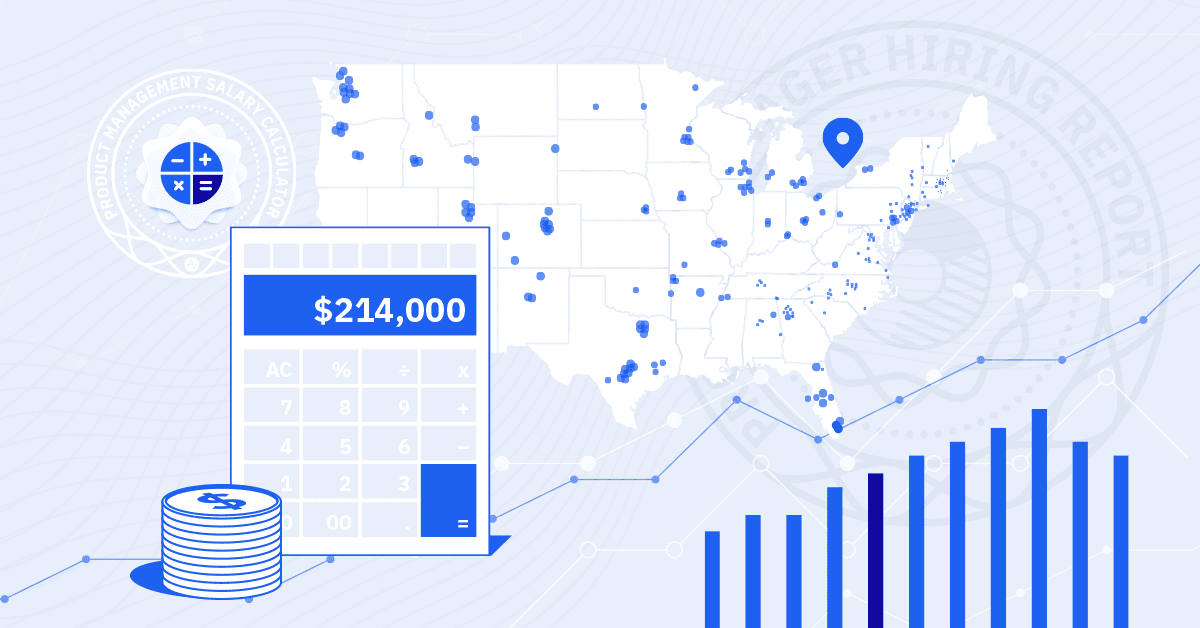Insights from Amplitude’s 2021 Product Manager Hiring Report
We spoke with over 1,500 product management professionals about how they work, where they work, and what tools they need to succeed.
Product managers make our essential, everyday digital products possible. Some even say we are in the “golden age” of product management. They are the frontline in an enterprise’s leap to digital-first.
But there isn’t much data about these professionals—how much they make, where they live, what they look for in an employer. The U.S. Bureau of Labor Statistics (BLS), which tracks over 1,000 occupations, isn’t even clocking product management as a career path.
With the help of our partner Product School, we surveyed over 1,500 product management professionals to fill in the gaps. We found that product is an attractive role, and for many professionals, it’s the logical next step to accelerate their career. With this information, product professionals can benchmark their compensation levels, and businesses can build effective teams that attract the best product talent.
Who Are Product Management Professionals?
To get a sense of the product management cohort, we surveyed where product professionals live and what their educational backgrounds, ages, skill sets, and years of experience are.
On the whole, product skews younger. The median age of a product professional in the United States is 33, while the median age of the overall U.S. workforce is 42, according to the BLS.
The same gap exists at the C-level. In our survey, the median executive product professional is 41 years old, while the median C-level executive in the overall workforce is 51.
The most common majors we see are business (23%), computer science/engineering (15%), social sciences (15%), other engineering (12%), and humanities (10%). The fact that humanities and social sciences are common majors busts the myth that you have to have a highly technical background to go into product management.

You also don’t have to build your career entirely within the product industry. Only 12% of survey respondents are “product lifers,” having spent their full careers in product. However, 61% have at least half of their career experience in product.
While there are lots of product opportunities in the San Francisco area, product professionals can be found in plenty of other metropolitan areas, including New York, Los Angeles, Seattle, Boston, Chicago, and Denver.
What is a Product Manager’s Earning Potential?
According to our findings, the average annual salary for a product management professional is $147,680 before taxes. That ranks #23 on the list of highest paying occupations that the BLS tracks. A number of factors influence that number: job title, years of experience, geography, and skill set, for example. Please note that mileage may vary: Our analysis does not include factors such as benefits and equity, in other words, the total rewards package a company could offer a product professional.
Depending on where a product professional lives, compensation can fluctuate by a few thousand dollars or up to $40k.
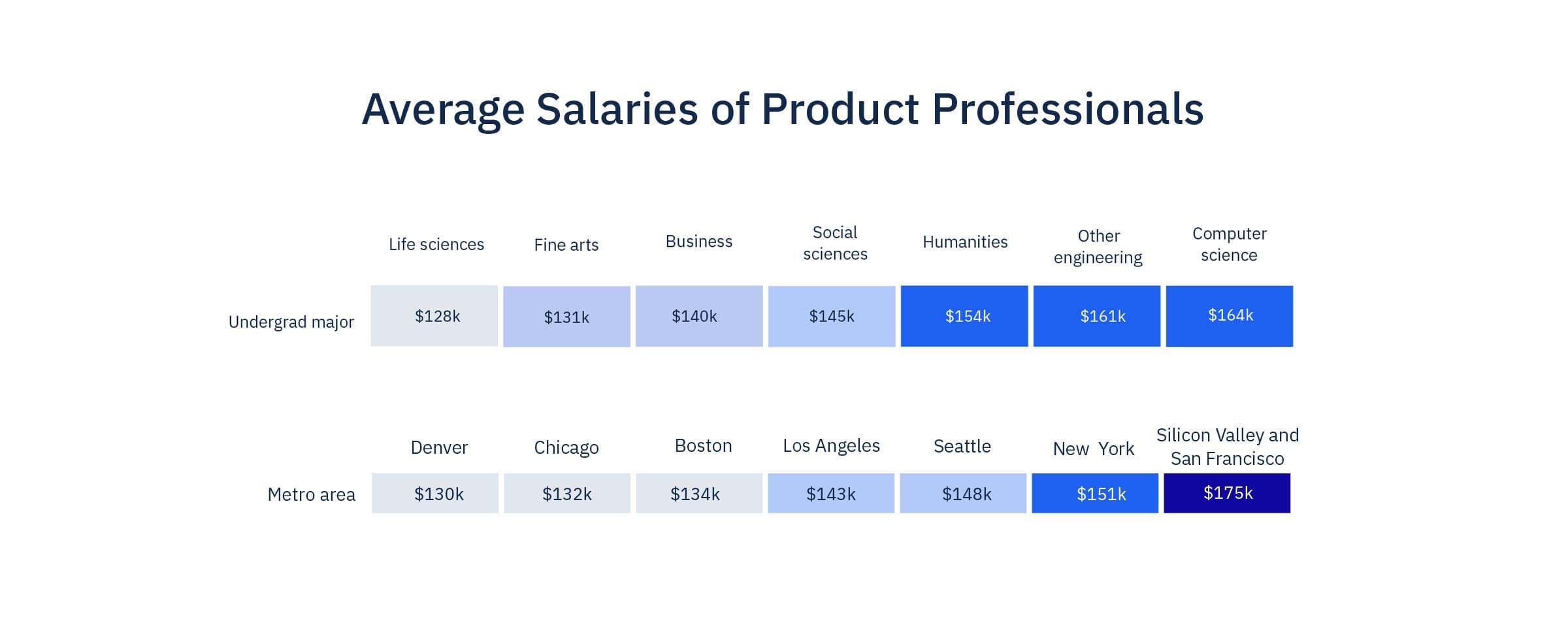
After reviewing how education impacts salary levels, what stood out was that humanities majors rank high—and even higher than business majors. But when you consider that empathy and collaboration are key aspects of product management, the connection is clear.
Another key finding: Product professionals who are skilled in one or more analytics platforms can make 14% more, on average—and can potentially make 17% more if they are skilled in Amplitude.
What Coding Languages and Analytics Tools Do Product Managers Use?
A common product management myth is that you have to know how to code. But 38% of respondents in our study don’t know any coding languages at all. Again, you don’t need to be highly technical to succeed in product.
That said, 55% of product professionals know SQL, and 25% know Python.
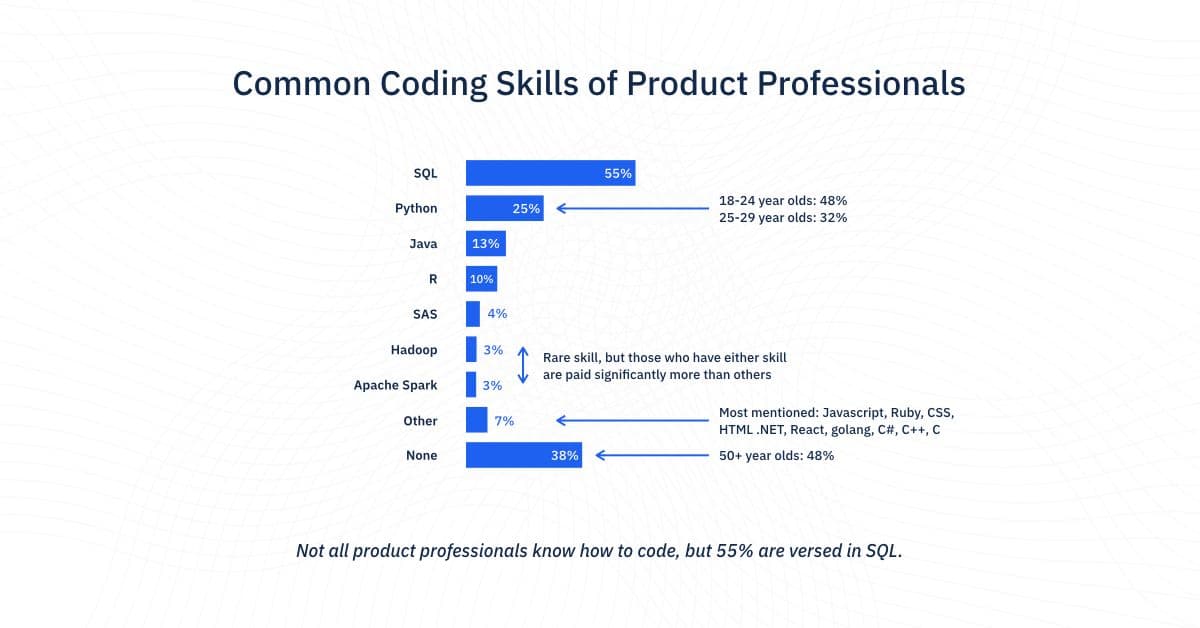
Familiarity with product analytics is much more widespread: 95% of survey respondents have experience using at least one product analytics tool. It’s important enough that we’ll say it twice: product managers who know how to use any product analytics tool earn 14% more, on average, and 17% more if they are skilled in Amplitude.
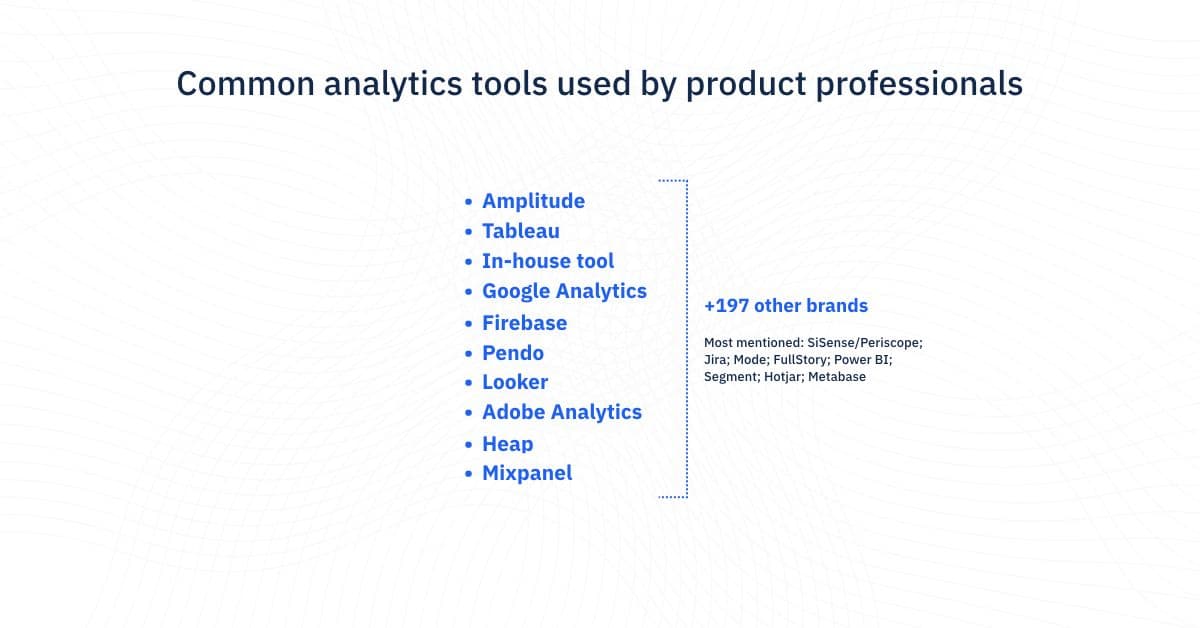
Leveling up your product analytics skills is crucial to understanding what drives retention, conversion, and engagement—the building blocks of every successful digital product. Analytics skills should be considered a core competency of the role.
Are Product Management Jobs Secure?
Half of all survey respondents spent less than a month looking for jobs before landing their current role. Forty-six percent applied for fewer than five positions before accepting their current job.
Nearly 70% of product management professionals are happy in their current position. While only 10% are actively seeking new roles, 62% are open to moving for the right opportunity.
Twenty-five percent of survey respondents are not open to a new employer. These respondents are more likely to be working in a seed/pre-seed or Series A company or to be a C-level executive, among other factors.
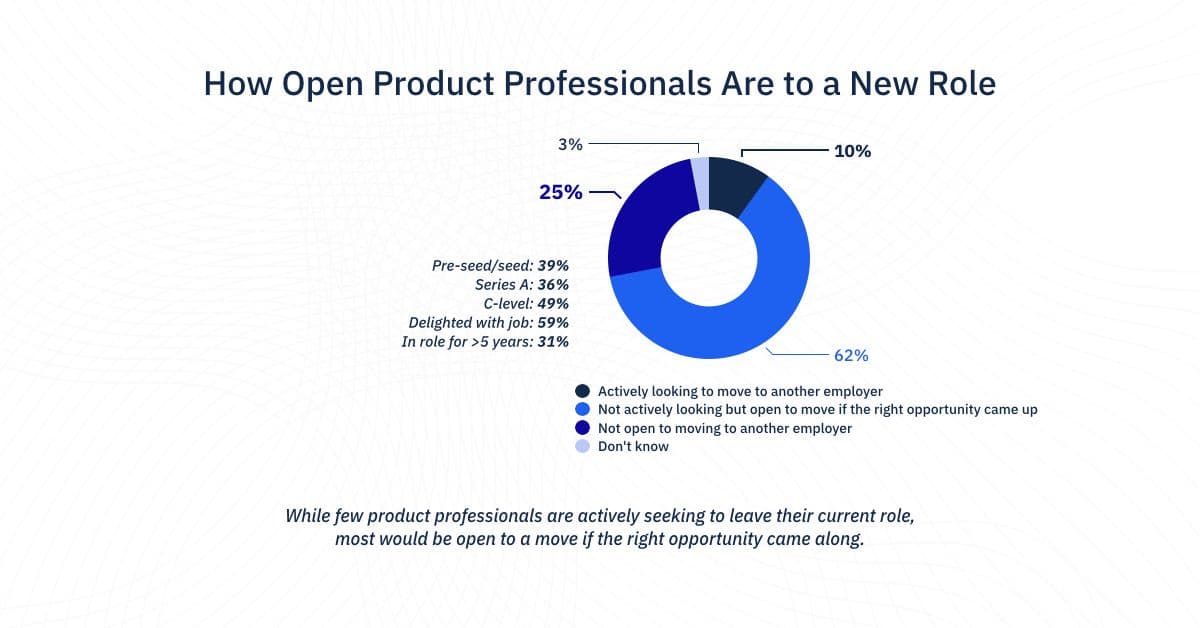
When considering an employment offer, respondents rank compensation (81%), opportunities for career development (64%), work/life balance (63%), potential for their work to have an impact (63%), and cultural fit (60%) as the most important factors they consider.
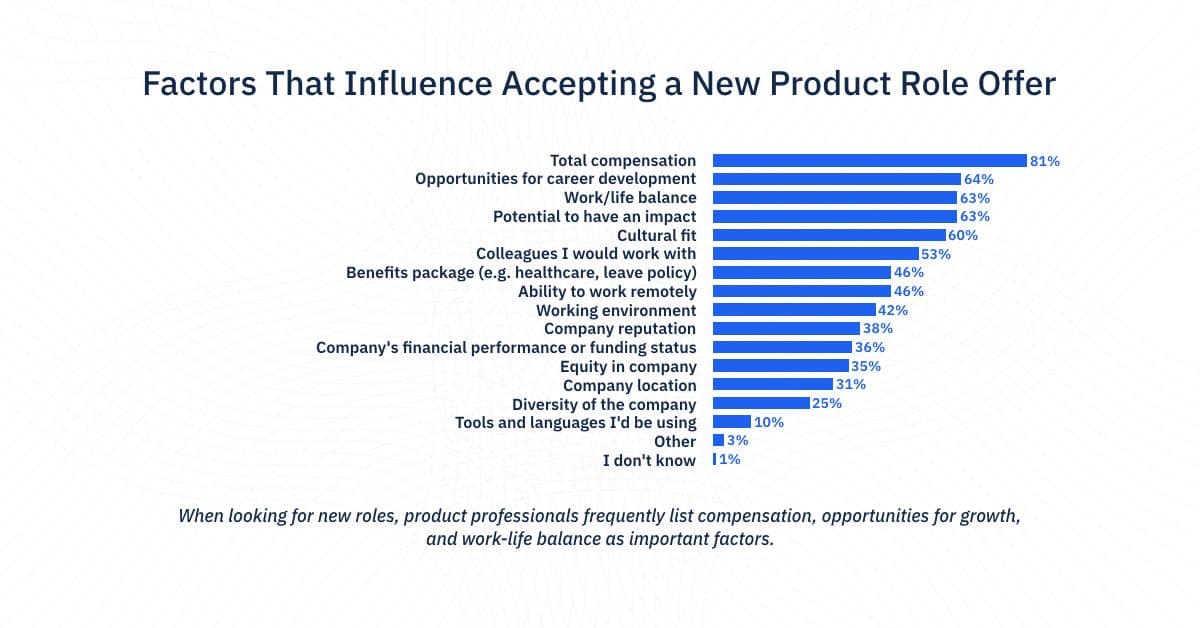
Because product management professionals can afford to be picky, businesses should pay close attention to building a product organization that offers fulfillment and career growth opportunities.
How Has the COVID-19 Pandemic Impacted Product Professionals?
The vast majority (97%) of product professionals are working from home for the duration of the COVID-19 pandemic. Before COVID-19, only 9% of survey respondents were completely or mostly remote.
Like many other industries, product management professionals don’t anticipate going back to primarily office-based work environments, even after the pandemic subsides. Thirty-five percent think they will stay primarily remote, while 41% anticipate a mix between remote and office-based work.
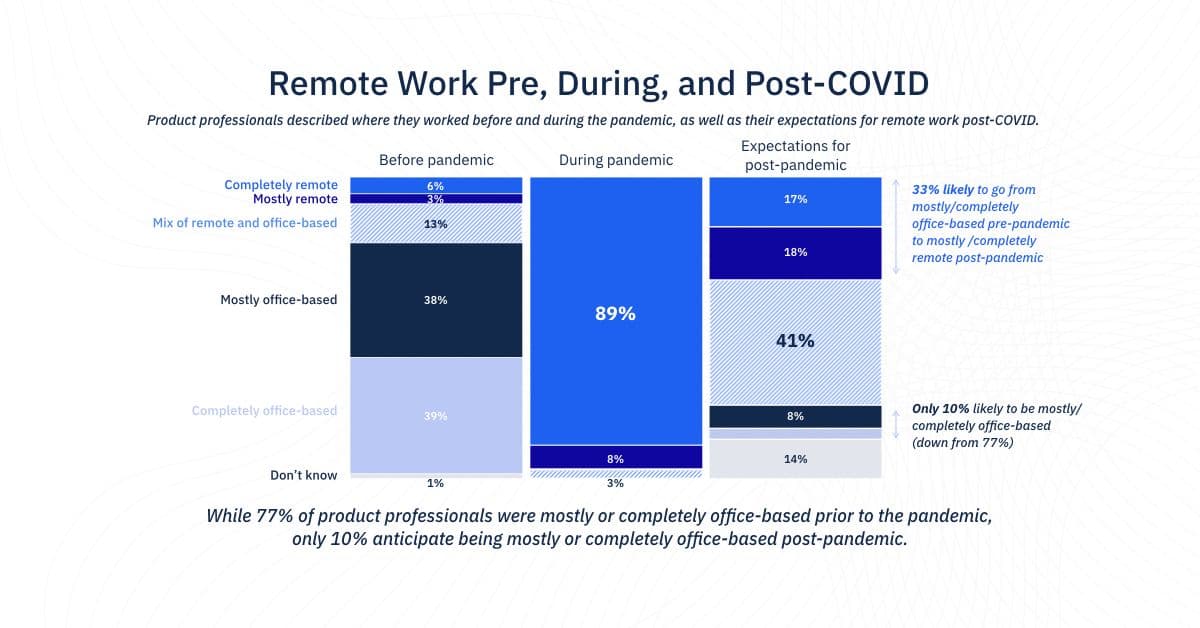
Thirty-seven percent of survey respondents started a new job in the last 12 months. Among 18- to 29-year-olds, that number is 48%. This suggests there are still plenty of companies hiring for product roles even in the midst of the pandemic.
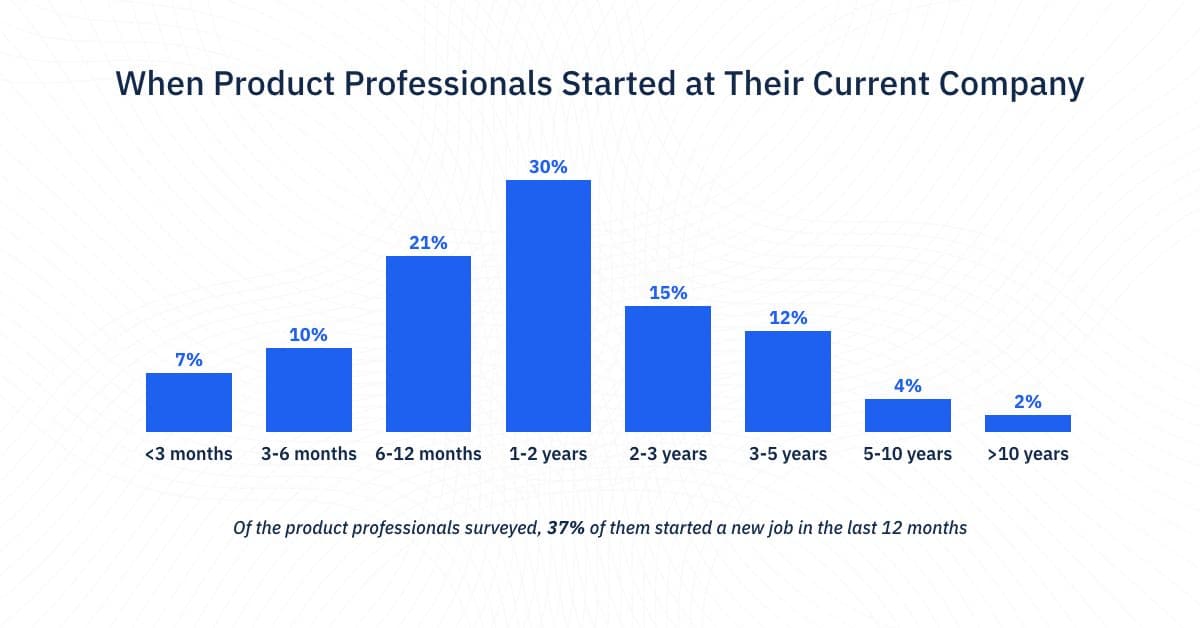
Product management professionals were also more likely to see their salary increase than decrease in the last year. Sixty-two percent of survey respondents received raises in the last 12 months, while 5% saw a salary decrease.
This product management survey data reflects the technology industry as a whole. Our COVID-19 trends report shows that the tech industry has not just held stable—it’s even grown, in many cases, in 2020. Digital transformation is here, and our reliance on digital products is likely to increase.
Read the Full Product Manager Hiring Report
Our full product manager hiring report dives deeper into the profile of the product professional, along with how to attract and retain product talent, and what skills are essential (or not essential) to the role. We also outline what makes for a high-velocity product organization. Read it here.

Kaitlin Pike
Former Director of Content, Amplitude
Kaitlin Pike is a former Director of Content at Amplitude where she leads the teams responsible for creating compelling stories and experiences.
More from Kaitlin
